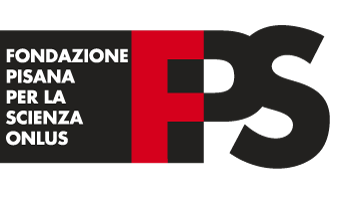Proteomics and Metabolomics
Proteins are the primary functional units of cellular processes: genetic mutations can lead to tumor progression owing to the altered activity/level of the mutated protein. Alterations in protein expression, post-translational modification, structure and their interactions have been associated with all disease states.
While the genome of an organism may be considered fixed, the proteome of a cell is dynamic and can differ between cell types, and even between morphologically identical cells. This is because the proteome is dependent on all extra cellular signaling, and so can display a regional and temporal variation.
It is now well established that mRNA and proteins frequently exhibit different levels, owing to different rates of degradation, post-translational modification, and sub-cellular compartmentalization. Indeed the dynamic range of protein abundance can be very large, e.g. the plasma proteome spans more than 10 logs of molar abundance. Furthermore, different splice variants, proteolytic processing and post-translational modifications make the number of distinct protein forms (proteoforms) far exceed the number of genes: whereas the human genome contains approximately 21,000 protein-encoding genes the number of protein forms has been estimated to be more than 10-fold greater.
The large dynamic range and increased complexity of the proteome make its characterization a formidable analytical challenge, and which is further exacerbated by the absence of protein amplification techniques analogous to PCR. Mass spectrometry has established itself as the method of choice for proteomics, and following a decade of rapid technological and methodological developments in which given sufficient sample a protein product from all protein-encoding genes have been detected, has led to the initiation of the era of MS-based proteomics.
The proteomics laboratory is focused on developing and applying new mass spectrometry methods to investigate the biomolecular changes that accompany disease progression development. The high morphological heterogeneity in tumors such as breast cancer reflect the high cellular complexity of the process; tumor development is now recognized to involve many cell types and in which the immediate microenvironment plays an essential role. Accordingly unraveling the molecular interplay requires high cellular specificity and high regional specificity. Two principal methods are developed and applied:
Ultrasensitive proteomics
Histopathological analysis is used to identify cellular- and region-specific groups of cells. The exact coordinates of these regions are then passed to a laser capture microdissection (LCM) system for their isolation, or to a localized tissue extraction probe based on liquid junction surface sampling. Such microsampling technologies can be combined with just about any biomolecular purification and separation technology, and which are coupled to the latest mass spectrometers for in-depth quantitative analysis or proteomes and proteoforms.
Focus areas:
- Ultra high sensitivity proteomics for the analysis of microdissected samples.
- Increased proteomics throughput for the clinical application of microdissection/microsampling LC-MS/MS.
- Characterization of proteoforms and determination of their role in disease.
Mass spectrometry imaging
Modern mass spectrometry techniques can generate biomolecular profiles containing hundreds of biomolecular ions directly from tissue. Spatially-correlated analysis, mass spectrometry imaging can simultaneously record the distribution of each of these ions. Following an experiment the tissue is histologically stained and a high-resolution digital image of the stained tissue aligned with the MSI dataset. Virtual microdissection of the MSI datasets, based on histopathological review, enables the mass spectral signatures of cellular- and region-specific cells to be obtained within their correct histopathological context. Using essentially the same technology but different tissue preparation methods we use MSI to investigate the spatio-chemical content of proteins, glycans, lipids, metabolites and neurotransmitters in tissue.
Focus areas:
- High mass resolution analysis for the spatio-chemical characterization of proteoforms in tissue.
- Multimodal imaging – integration of MSI with other imaging modalities for increased cellular specification.
- High spatial and high mass resolution analysis of metabolites and neurotransmitters.
The proteomics laboratory is equipped with the latest MS based technologies, including an Orbitrap Fusion (Thermo Scientific) and Orbitrap Q-Exactive Plus (Thermo Scientific), an AssayMAP Bravo liquid handling robot (Agilent) for increased throughput and reproducibility, and complemented by a fully functional pathology laboratory.
Proteolab is directed by Liam McDonnell.
